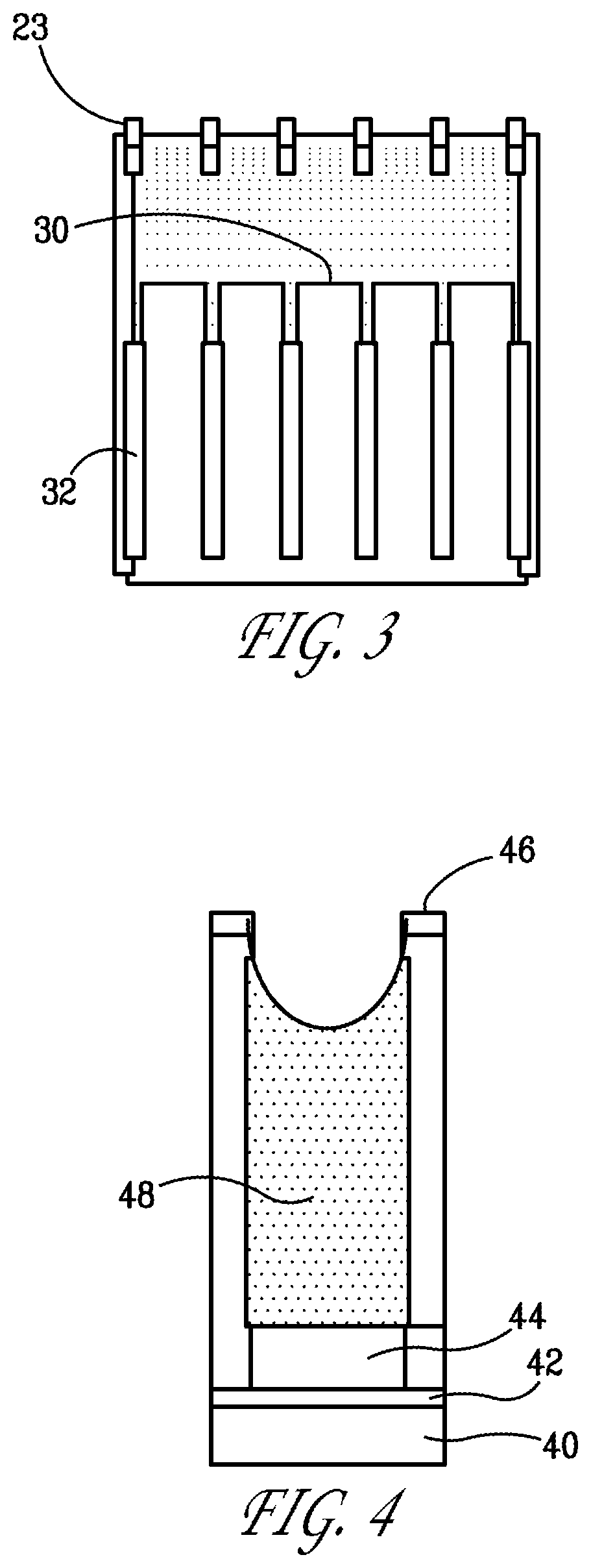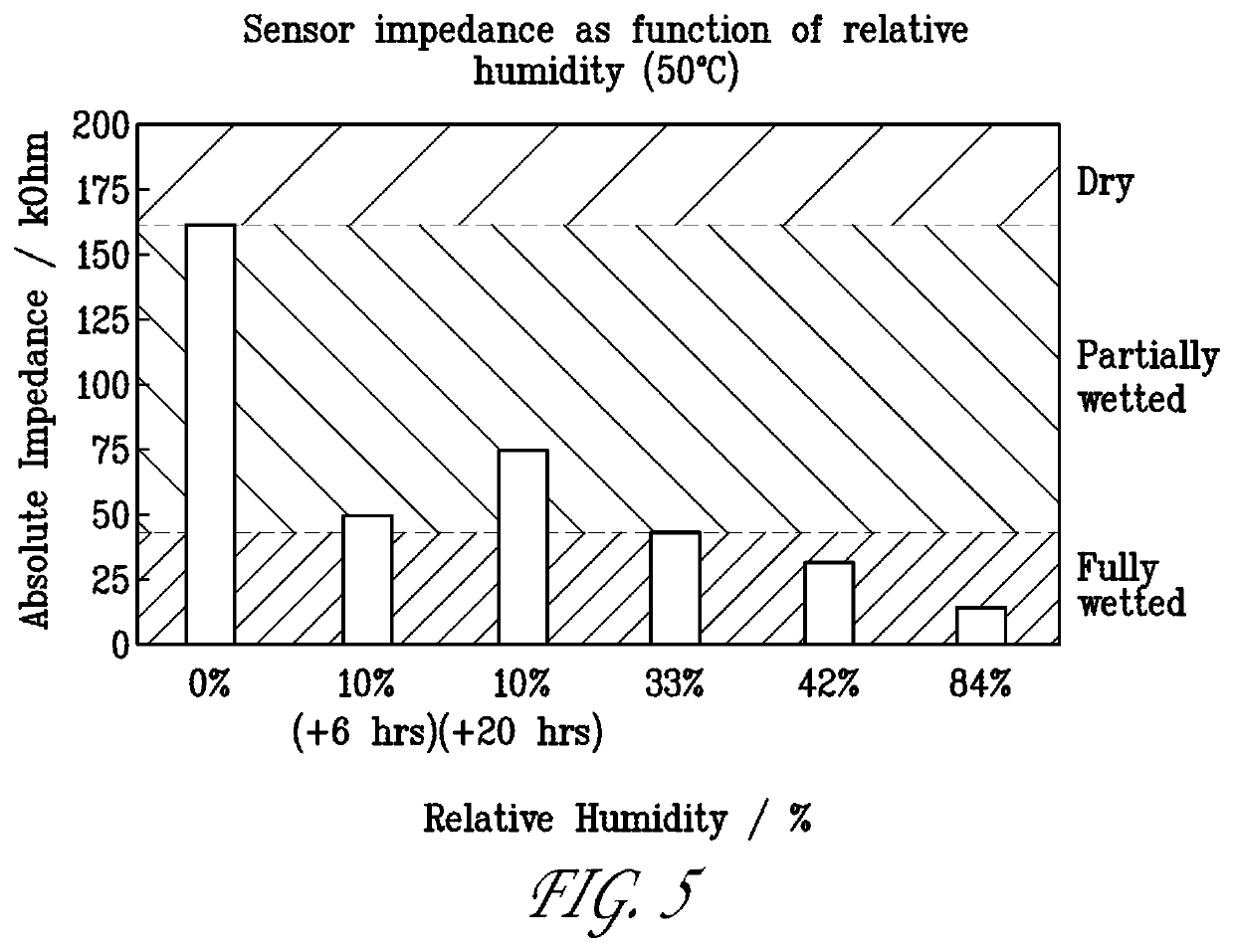Electrochemical detection of gas phase chemicals
a gas phase chemical and electrochemical technology, applied in the direction of electrochemical variables of materials, instruments, coatings, etc., can solve the problems of unsatisfactory detection limits, unsatisfactory detection results, and unsatisfactory detection results
- Summary
- Abstract
- Description
- Claims
- Application Information
AI Technical Summary
Benefits of technology
Problems solved by technology
Method used
Image
Examples
example 1
tion of Microwell Condensation
[0076]The working microelectrode array (i.e., the MEA) will typically be operated using an aqueous electrolyte, although the use of other electrolytes is not excluded and is within the range of uses that are contemplated. The microwells of the MEA may filled with electrolyte by immersion or, at least on the case of aqueous electrolyte, by capillary condensation of atmospheric moisture.
[0077]We performed an experimental study to determine the stability of an aqueous fill as a function of relative humidity and temperature. This is an important consideration if, for example, the MEA will be required to operate continuously over a long time interval, especially if the operation is unattended.
[0078]An MEA was fabricated using AAO about 50 μm thick with 120-nm-diameter pores. Working electrodes of gold were deposited by physical vapor deposition on the back surface of the template to a thickness sufficient to fully block the micropores. A platinum counter ele...
example 2
tection by Gas-Phase Dissolution into the Microwells
[0088]We fabricated a prototype MEA for detecting iodine. The MEA was fabricated using a 13 mm diameter, 50-μm thick freestanding micropore template with 120-nm-diameter pores. Working electrodes of gold were deposited on the back surface of the template to a thickness sufficient to fully block the micropores. A platinum counter electrode was deposited on the front surface of the template without blocking the pores.
[0089]We performed an experiment to evaluate how well this design could detect an iodine gas concentration of about 20 ppb in a flow of nitrogen gas moisturized to variable relative humidities, respectively 75%, 62%, and 35%. We performed cyclic voltammetry before and after the iodine gas was introduced into the sensor environment. The signal was recorded at a characteristic voltage suited for detection of iodine gas by the oxidization of its hydrolyzed species The result is shown in FIG. 6.
[0090]It is shown that within ...
embodiments 1
Further Use of Electrochemically Selective Preconcentrator Materials
[0096]The performance of the electrochemical sensor can be enhanced by incorporating a material that preconcentrates the analyte or an analyte precursor. (An example precursor is iodine gas, which can be preconcentrated for a sensor designed to detect iodide.) The preconcentrator acts in series with the sensor detector. That is, it accumulates the analyte and then in response to an intentional stimulus it releases the analyte into the electrochemical cell. This enables detection at a higher concentration than would otherwise be possible, thus yielding a stronger detection signal.
[0097]The preconcentrator may be designed to selectively accumulate the analyte, so that undesired contaminant species are exposed to the sensor detector only in limited or negligible quantities.
[0098]Two general categories of preconcentrator material are considered here. Both categories may include chemically selective materials as well as...
PUM
| Property | Measurement | Unit |
|---|---|---|
| diameter | aaaaa | aaaaa |
| mean diameter | aaaaa | aaaaa |
| mean diameter | aaaaa | aaaaa |
Abstract
Description
Claims
Application Information
 Login to View More
Login to View More - R&D
- Intellectual Property
- Life Sciences
- Materials
- Tech Scout
- Unparalleled Data Quality
- Higher Quality Content
- 60% Fewer Hallucinations
Browse by: Latest US Patents, China's latest patents, Technical Efficacy Thesaurus, Application Domain, Technology Topic, Popular Technical Reports.
© 2025 PatSnap. All rights reserved.Legal|Privacy policy|Modern Slavery Act Transparency Statement|Sitemap|About US| Contact US: help@patsnap.com



